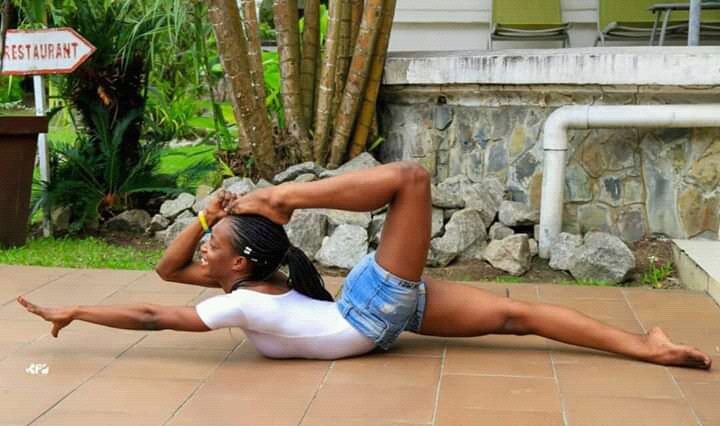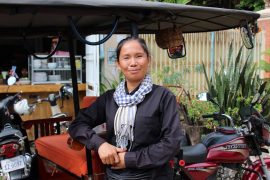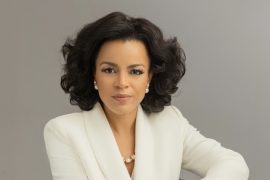By Aditi Maheshwari
South Africa has a poor record at the Olympics, and in gymnastics in particular. With a background of financial constraints and lack of proper training to support a great aspiration, Astride Mikoko took her first steps in gymnastics at the age of five. Her humble beginning started on the couch in her parent’s house on the outskirts of the city of Pointe-Noire, the second-largest city in the Republic of the Congo in Central Africa.
“We have the means to feed her, clothe her and support her studies. That is why we ask God to give us a sponsor who can help her. ” Badila Anaise, Astride’s mother explained.
In 2014, Astride Mikoko took part in her first competition, followed with the departmental championships of Pointe-Noire paving her way to win several medals.
“At the first competition, I got the silver medal as I ranked second. In the second competition, I took the first place with the gold medal and in the third event, I finished third”, the Congolese gymnast said about her wins.
Astride Mikoko dreamt of having a professional career in rhythmic gymnastics, both nationally and beyond the borders of the Congo in spite of the dominant challenges.
Rhythmic gymnastics is a sport, where girls reach their peak pretty early – typically in their late teens or early twenties. (15-20). However, the last decade observed seeing highly competitive gymnasts in their early twenties (Caitlin Rooskrantz, Evgenia Kanaeva, Anna Bessonova, Delpphine Ledoux, Carolina Rodriguez, Sylvia Miteva). The trend to start training early is in practice for obvious reasons like gaining more time to develop the relevant qualities of balance, flexibility, strength, coordination, agility, and endurance. The movements involve exercises that facilitate the development of the arms, legs, shoulders, back, chest, and abdominal muscle groups. The sport calls for the performance of five separate routines with the use of five apparatus; ball, ribbon, hoop, clubs, rope—on a floor area, with prominence on the aesthetic rather than the acrobatic.
“I want to go further, where art is really known, to show the world that in Congo, there is also talent,” she says.
And it is to achieve her dream Astride (28-year-old) has devoted her time to more training sessions. Bertoni Nganga is Astride’s coach who is extremely proud of his gymnast’s dedication and efforts.
“It’s my best choice because when I coach children it’s to develop certain things so that I can see them cross other boundaries”.
For Miamonika Tetani Jean, Pointe Noire’s Technical Director of Gymnastics. The wish or dream is for “a** gymnasiums to be built in Pointe-Noire to allow our athletes to work in better conditions”.** While waiting for this transformation at both mental and physical level where the vision is equipped with the necessary infrastructure and training facilities, along with a community that encourages its young female population to participate in gymnastics, Pointe Noire is armed with resilience to continue this endeavour in the hopes of a bright future. The Democratic Republic of the Congo is especially famous for its professional basketball NBA and football players but gymnastics professionally is yet to be developed and brought full circle.
When young girls like Astride take the initiative to break the status quo and courageously fight the opposition, it not only makes a family proud and hopeful but instils a spirit of resilience in others who are dreaming of goals beyond their means. The young girl is an inspiration for many others who are held back behind societal conditioning. We as individuals and the community at large shall take appropriate steps to equip our young female aspirants to achieve greatness. Instead of holding them back, we must find ways to push them to achieve remarkable positions. It’s time to leverage the power of female participation in a male-dominated world.





Comments are closed.